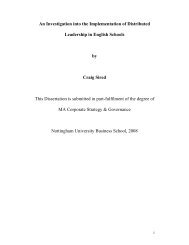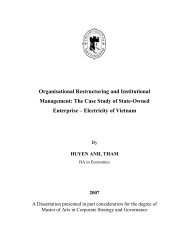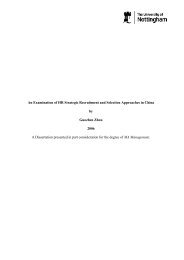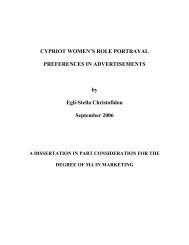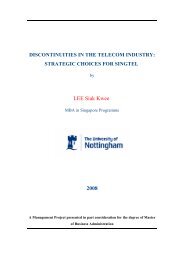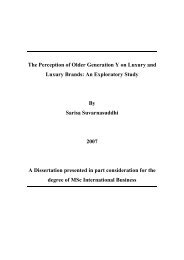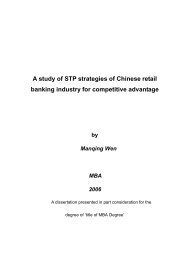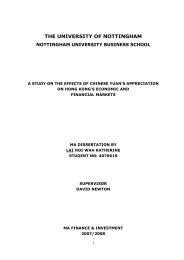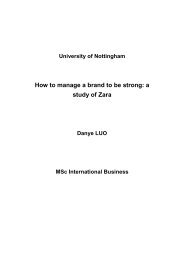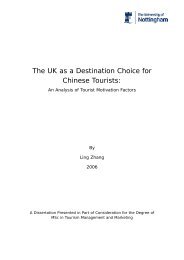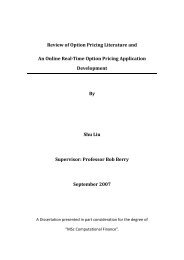application of real options valuation to r&d investments in ...
application of real options valuation to r&d investments in ...
application of real options valuation to r&d investments in ...
You also want an ePaper? Increase the reach of your titles
YUMPU automatically turns print PDFs into web optimized ePapers that Google loves.
that has occurred <strong>in</strong> the past. Depend<strong>in</strong>g on the asset selected as reference for theproject <strong>to</strong> be evaluated, it may be the his<strong>to</strong>rical volatility <strong>of</strong> a s<strong>to</strong>ck <strong>in</strong>dex <strong>of</strong> eitherpharmaceutical or biotech companies. Alternatively, one could use the volatility <strong>of</strong>revenues <strong>of</strong> a drug that has a similar product pr<strong>of</strong>ile as the drug that is supposed <strong>to</strong>emerge from R&D. The his<strong>to</strong>rical time period chosen <strong>to</strong> def<strong>in</strong>e an asset‘s volatilityshould correspond <strong>to</strong> the lifetime <strong>of</strong> the option. His<strong>to</strong>rical volatility ahs beensuggested by most authors as a basis for <strong>real</strong> <strong>options</strong> e<strong>valuation</strong> <strong>in</strong> the pharmaceutical<strong>in</strong>dustry, assum<strong>in</strong>g that an asset‘s volatility will be driven by comparable fac<strong>to</strong>rs <strong>in</strong> thefuture.Forecast volatility: specialist companies or experts provide forecast volatility. Thismay be the preferred approach when s<strong>to</strong>ck <strong>in</strong>dices are used as reference for theunderly<strong>in</strong>g asset.Seasonal volatility: some pharmaceutical products may have a seasonal volatility,such as <strong>in</strong>fluenza vacc<strong>in</strong>es, or cough and cold medic<strong>in</strong>es. This should be taken <strong>in</strong><strong>to</strong>consideration when a general volatility parameter is determ<strong>in</strong>ed <strong>to</strong> reflect the risk <strong>of</strong>the product.Generally, volatility can be estimated as below.Volatility is def<strong>in</strong>ed as the standard deviation <strong>of</strong> the cont<strong>in</strong>uously compounded returnon an asset. The cont<strong>in</strong>uously compounded return <strong>of</strong> an asset is def<strong>in</strong>ed as:u t = ln (I t /I t-1 )Where:u t: return between time t-1 and tI t: asset value at time tI t-1: asset value at time t-1Volatility is then calculated based on the formula below:Page | 35



